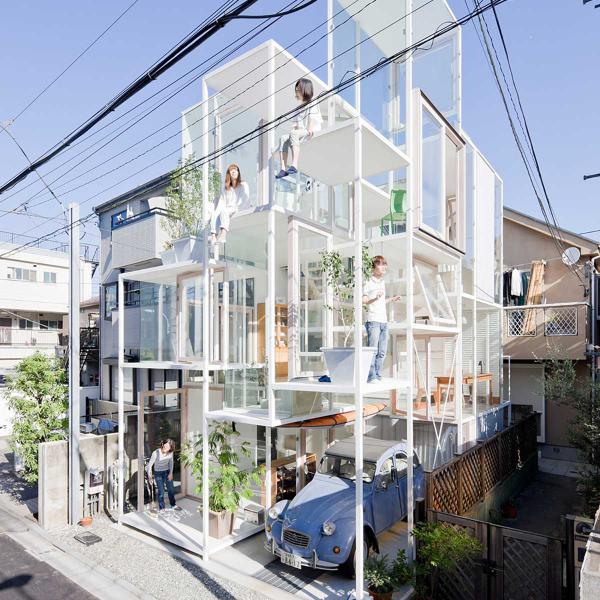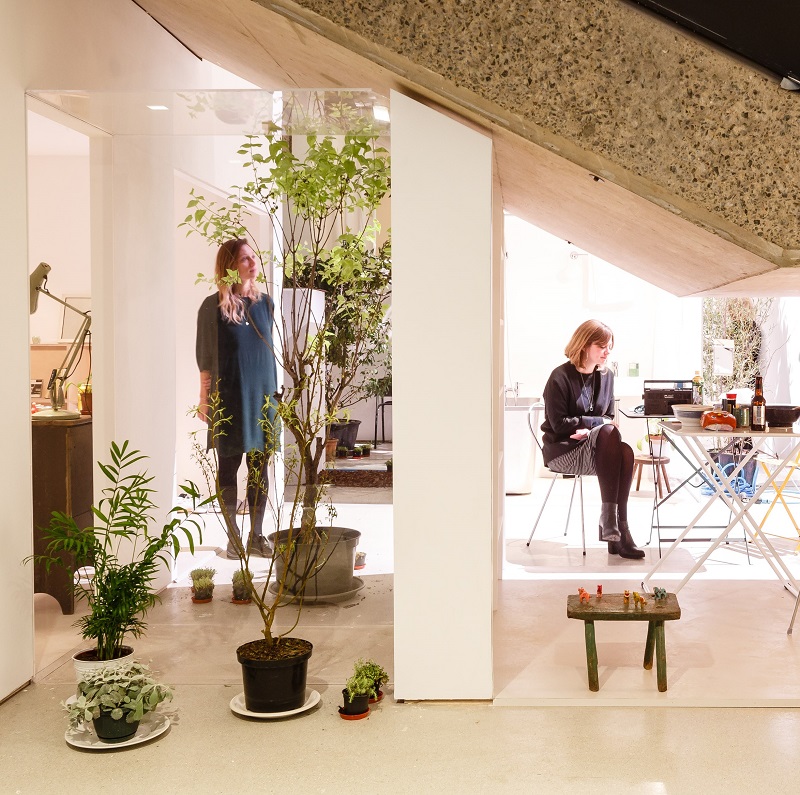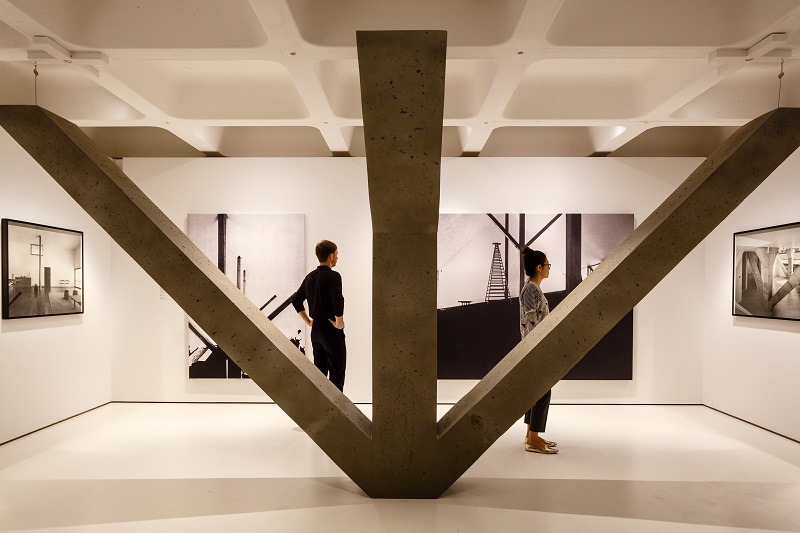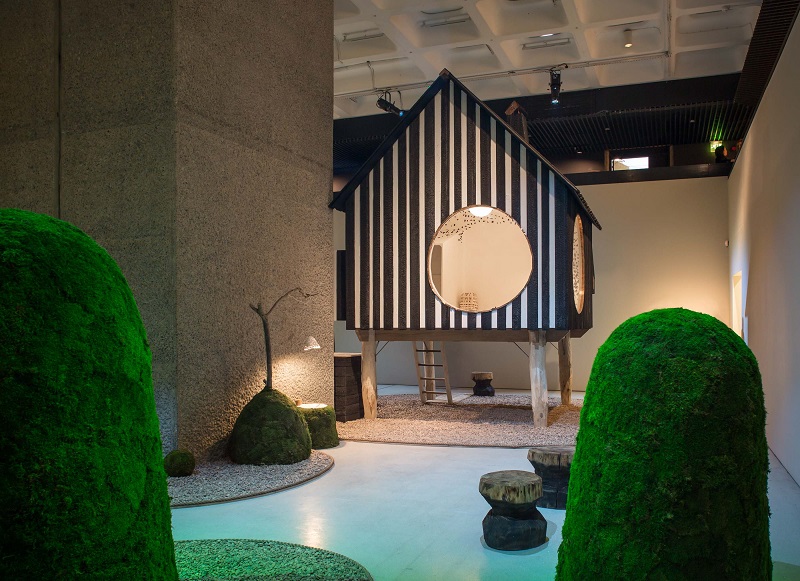Main author
Michael BrooksThe Japanese House: Architecture and Life after 1945
In April 2017, Designing Buildings Wiki attended a major first-of-its-kind UK exhibition at London’s Barbican Centre. ‘The Japanese House: Architecture and Life after 1945’ focuses on Japanese domestic architecture since the country was left devastated by the Second World War.
The exhibition features more than 40 architects, from the celebrated Tadao Ando and Kenzo Tange, to those little-known outside their home country such as Kazuo Shinohara and Osamu Ishiyama. Together they are responsible for a glut of groundbreaking architectural projects that quite literally re-built Japan from the ruins and provided innovative and experimental solutions to urbanisation, traditional building and densification.
Through a range of media – video, aural, models and prints – the exhibition takes the visitor through the different phases and trends that developed out of the need for rapid solutions to critical problems (approximately 4.2 million homes were destroyed by the end of the war). Japanese architects, in particular the developing movement of Metabolists, agreed that the solution lay in standardised, modular designs using prefabricated elements.
It is interesting to note that while Europe, at the same time, focused on large housing complexes, Japan concentrated on the single family home and how it could adapt to the realities of the 20th century. It is hard not to draw parallels with the UK’s contemporary housing shortage, and the need to re-imagine domestic architecture to meet the pressing realities of the 21st century.
The centre-piece of the exhibition is an ambitious 1:1 scale recreation of the Moriyama House by the Pritzker Prize-winning architect Ryue Nishizawa. It is considered one of the most important designs of the 21st century, representing as it does a radical decomposition of the conventional house.
10 individual units are arranged around the sturdy structural frame of the Barbican as though intended as part of its original design.
There is also an ambitious new commission by architect/historian Terunobu Fujimori who has designed a hand-charred timber teahouse with a playful garden through which visitors can stroll. This arrangement provides an intriguing accompaniment to the minimalism of the Moriyama House, offering a glimpse of the range of traditional Japanese architecture.
This is a well-presented and thoroughly engaging exhibition that all those with an interest in architecture and design, or simply with a curiosity for Japan, would do well to experience.
The Japanese House runs until 25th June 2017.
Images courtesy Barbican Centre.
[edit] Find out more
[edit] Related articles on Designing Buildings Wiki
Featured articles and news
RTPI leader to become new CIOB Chief Executive Officer
Dr Victoria Hills MRTPI, FICE to take over after Caroline Gumble’s departure.
Social and affordable housing, a long term plan for delivery
The “Delivering a Decade of Renewal for Social and Affordable Housing” strategy sets out future path.
A change to adoptive architecture
Effects of global weather warming on architectural detailing, material choice and human interaction.
The proposed publicly owned and backed subsidiary of Homes England, to facilitate new homes.
How big is the problem and what can we do to mitigate the effects?
Overheating guidance and tools for building designers
A number of cool guides to help with the heat.
The UK's Modern Industrial Strategy: A 10 year plan
Previous consultation criticism, current key elements and general support with some persisting reservations.
Building Safety Regulator reforms
New roles, new staff and a new fast track service pave the way for a single construction regulator.
Architectural Technologist CPDs and Communications
CIAT CPD… and how you can do it!
Cooling centres and cool spaces
Managing extreme heat in cities by directing the public to places for heat stress relief and water sources.
Winter gardens: A brief history and warm variations
Extending the season with glass in different forms and terms.
Restoring Great Yarmouth's Winter Gardens
Transforming one of the least sustainable constructions imaginable.
Construction Skills Mission Board launch sector drive
Newly formed government and industry collaboration set strategy for recruiting an additional 100,000 construction workers a year.
New Architects Code comes into effect in September 2025
ARB Architects Code of Conduct and Practice available with ongoing consultation regarding guidance.
Welsh Skills Body (Medr) launches ambitious plan
The new skills body brings together funding and regulation of tertiary education and research for the devolved nation.
Paul Gandy FCIOB announced as next CIOB President
Former Tilbury Douglas CEO takes helm.
UK Infrastructure: A 10 Year Strategy. In brief with reactions
With the National Infrastructure and Service Transformation Authority (NISTA).



























